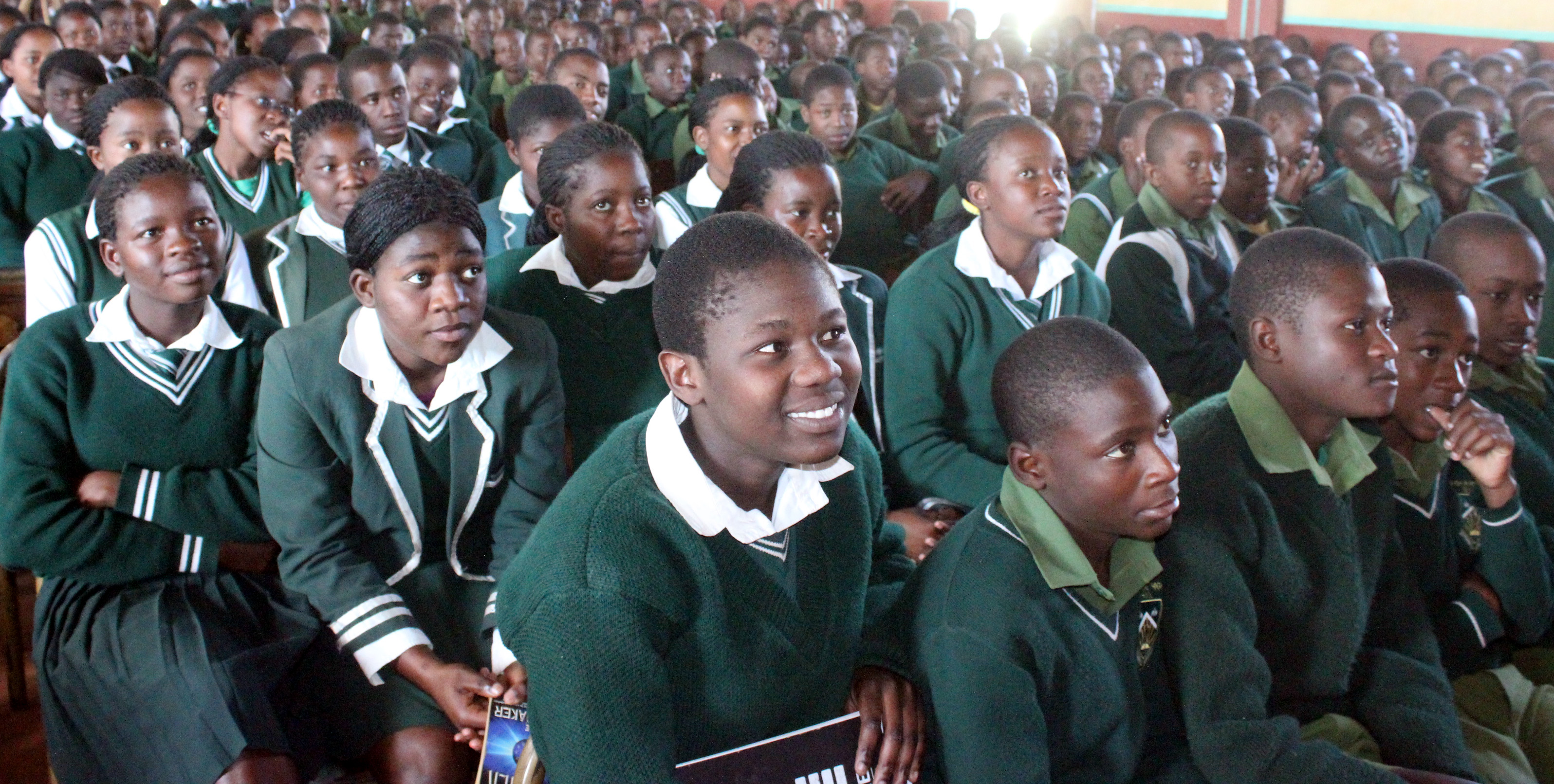Marked development in education sector since 1980

Nelson Masukume
ZIMBABWE celebrates her Independence Day on April 18, 35 years after the end of a bitter, protracted armed struggle. Since the country’s attainment of independence in 1980, there have been significant efforts to consolidate its gains. The transformation of the education sector and economic reforms are some notable developments the country has seen over the years.
Educationist and esteemed curriculum researcher, Bernard Gatawa says tremendous strides have been taken by government towards the domestication of education since 1980, when the country inherited a racially skewed education system which favoured mostly whites.
One of the major features of the colonial education system was the F1 programme and the F2 pathways which separated blacks from whites.
A product of the 1966 Education Plan, the dominantly white only programme prepared whites for the administration of industry, education and law while the F2 concept, viewed as a watered down curriculum, sought to create a pool of semi-skilled and half-educated poorly paid labourers to serve in white owned industries.
The colonial education regulatory frameworks and statutory provisions created very glaring inequalities which affected black students’ advancement opportunities.
The abolishment of the pre-independence education system saw the phasing out of the F1 and F2 programmes to allow an inclusive education and all academic system which set five ‘O’ Levels as the basic entry requirement in both tertiary institutions and the job market.
Student enrolment ballooned in both primary and secondary schools following the opening of schools that had been closed due to the war especially in rural areas. The general expansion in enrolments proportionally called for increased infrastructural demands exacerbated by massive vandalism of educational infrastructure that had occurred in the years leading to 1980.
According to the 1991 Ministry of Education, Art, Sports and Culture ED46 Returns, there were 4,461 viable and non-viable primary schools with Manicaland province having over 700 schools.
There were 1,499 viable and non-viable secondary schools across the country with the Midlands province having nearly 300 schools while Harare was the least with 74 schools.
To date, there are over 5,000 primary schools and over 2,300 secondary schools across the country. However, long distances that rural children have to walk to the nearest school remains one of the greatest challenges in accessing quality education.
The introduction of the Early Childhood Development programme in primary schools is a new phenomenon that the government implemented in 2006 as a response to the 1998 Nziramasanga Commission recommendations on education and training.
The Zimbabwe Integrated Teacher Education Course (ZINTEC) put in place to react to qualified teacher shortages soon after independence has been lauded as one of the historic education reforms aimed at coping with the ever expanding education demands and the need for qualified teachers in the country.
Significant strides have been made in the capitalisation of both the supervision and the examination of education in-spite of a recurrent combination of infrastructural, human, financial and systematic constraints that continue to frustrate the total evolution of our noble education system which is a marvel across Africa.
But the recent introduction of two more subjects at primary school congests the school timetable raising fears that the teachers and supervisors would not give adequate attention and preparatory ability to all the 13 subjects in the curriculum.
Low salaries for teachers remain a nagging problem and educators continue to show signs of lack of motivation following a ministerial directive scrapping incentives introduced at the zenith of a teacher exodus and an unfriendly economic environment in 2008.
On numerous occasions, government has promised to review salaries to levels commensurate with teacher’s qualifications in the region. The Civil Service Commission embarked on a nation-wide human skills audit exercise reportedly aimed at weeding out ghost workers who are gobbling a huge chunk of the wage bill. It is also reported that the exercise will culminate into de-bunching of civil servants’ grades according to experience and qualification.
One of the critical developments towards quality education has been the introduction of a schools examinations body. The Zimbabwe Schools Examination Council (ZIMSEC) is a government parastatal that was established mainly to set, standardise, moderate, supervise, mark, and safeguard the integrity of the examination system in schools.
The increase in qualified teaching personnel and materials through government partnerships with bodies such as UNICEF through the Education Transition Fund has greatly enhanced the quality of education and performance at Grade 7, ‘O’ and ‘A’ Level, examinations in schools around the country.
ZIMSEC announced that it would be procuring state of the art examination dispensing equipment in a bid to curb examination leakages that have tarnished the good image of the body that mutated from the colonial Cambridge examination system.
Over the years, ZIMSEC has been hit by a spate of examination paper leakages that have left the body faced with huge reprinting costs with dozens of officials either tainted or prosecuted in courts of law.
Last year, ‘O’ Level candidates were ordered to re-sit exams after the initial papers were leaked.
The Education Act Statutory Instrument (SI) 67 of 1987 and S.I 379 of 1998 are part of the government statutory inventory aimed at decentralising and regulating the role of all the players in the provision of quality education and child friendly infrastructure.
The Education Act, a repeal of the Education Plan of 1966 provides and defines the role of responsible authorities in schools. The responsible authorities such as mines, churches, boards of trustees and local authorities have schools that they built across the country.
The government compels all responsible authorities to adhere to physical planning regulations that stipulate provisions on the establishment of infrastructure in such schools.
Approval prior to the setting up of any building in both private and government owned schools is a pre-requisite. Government also deploys human resources controlled under public service regulations.
In some unfortunate cases, some authorities fall wayward and through commission, contravene government regulations.
The desire by either councils or churches to control personnel deployed by government in their schools is one challenge that sometimes compromises education delivery in some schools.
The disputes sometimes spill into the courts inviting avoidable costs on institutions.
There is a need for all responsible authorities to align their by-laws with central government laws to avoid conflict in institutions. Such institutions are advised to include in their boards, people with expertise and an understanding of government regulations to curb these conflicts.
Apart from authorities, parents have a major role to play in schools. Statutory Instrument 87 of 1992 allows the formation of School Development Committees (SDCs) in schools.
Both statutes allow parents to form committees that collect levies for the development of the school. Although these bodies are necessary, they sometimes impede development and compromise the quality of education.
Because schools are business entities nowadays, there is need to elect into these committees, parents who are literate to communicate and interact with other education stakeholders. These parents must have sound minds on issues especially government policies in schools.
Schools are not beerhalls; therefore reckless behaviour is the least expected thing in schools.










Comments